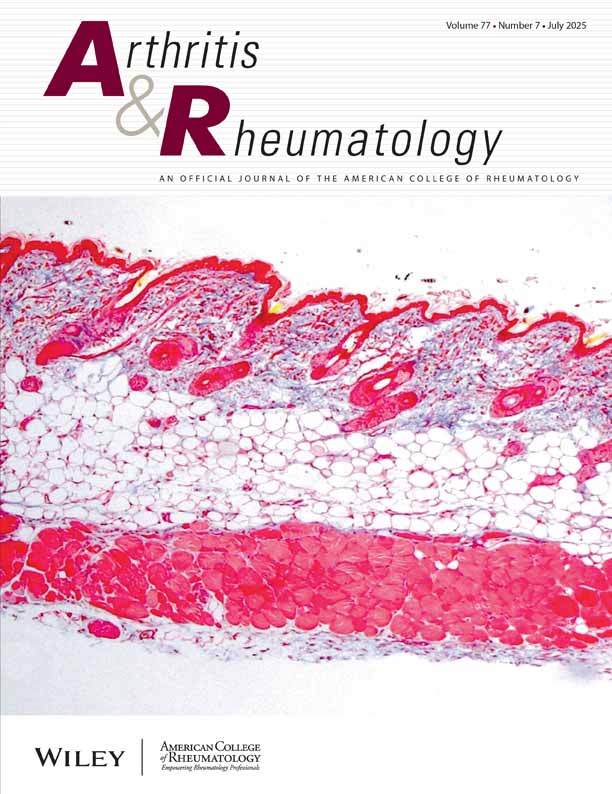Arthritis in MRL/lpr mice is under the control of multiple gene loci with an allelic combination derived from the original inbred strains
Abstract
Objective
To clarify the mode of inheritance and the genome origins of arthritis in a lupus-prone strain of mice, MRL/MpJ, bearing a Fas deletion mutant gene, lpr (MRL/lpr).
Methods
Using non–lupus-prone strains of mice, C3H/HeJ-lpr/lpr (C3H/lpr), (MRL/lpr × C3H/lpr)F1 intercross and MRL/lpr × (MRL/lpr × C3H/lpr)F1 backcross mice were prepared. Arthritis in individual mice was analyzed by histopathologic grading, and the genomic DNA of the backcross mice was examined by simple sequence-length polymorphism analysis to determine the polymorphic microsatellite markers highly associated with arthritis.
Results
Arthritis-susceptibility loci with significant linkage were mapped between D15Mit111 and D15Mit18 (map position 17.8–18.7 cM) on chromosome 15 and between D19Mit112 and D19Mit72 (map position 43.0–55.0) on chromosome 19 (logarithm of odds scores 3.5 and 4.3, respectively). Three other loci, one mapped to each of chromosomes 1, 2, and 7, showed suggestive linkage. Loci homozygous for MRL alleles on chromosomes 1 and 19 enhanced arthritis in both sexes, whereas other loci on chromosomes 2 and 15 selectively affected males. A locus homozygous for MRL alleles on chromosome 7 inhibited arthritis in both sexes. Three of these loci were found to originate from an LG/J strain and 1 from an AKR/J strain. Some combinations of these loci showed an additive effect in a hierarchical manner on the development of arthritis.
Conclusion
Arthritis in MRL/lpr mice is a complex pathologic manifestation resulting from the cumulative effect of multiple gene loci with an allelic combination derived from the original inbred strains.




